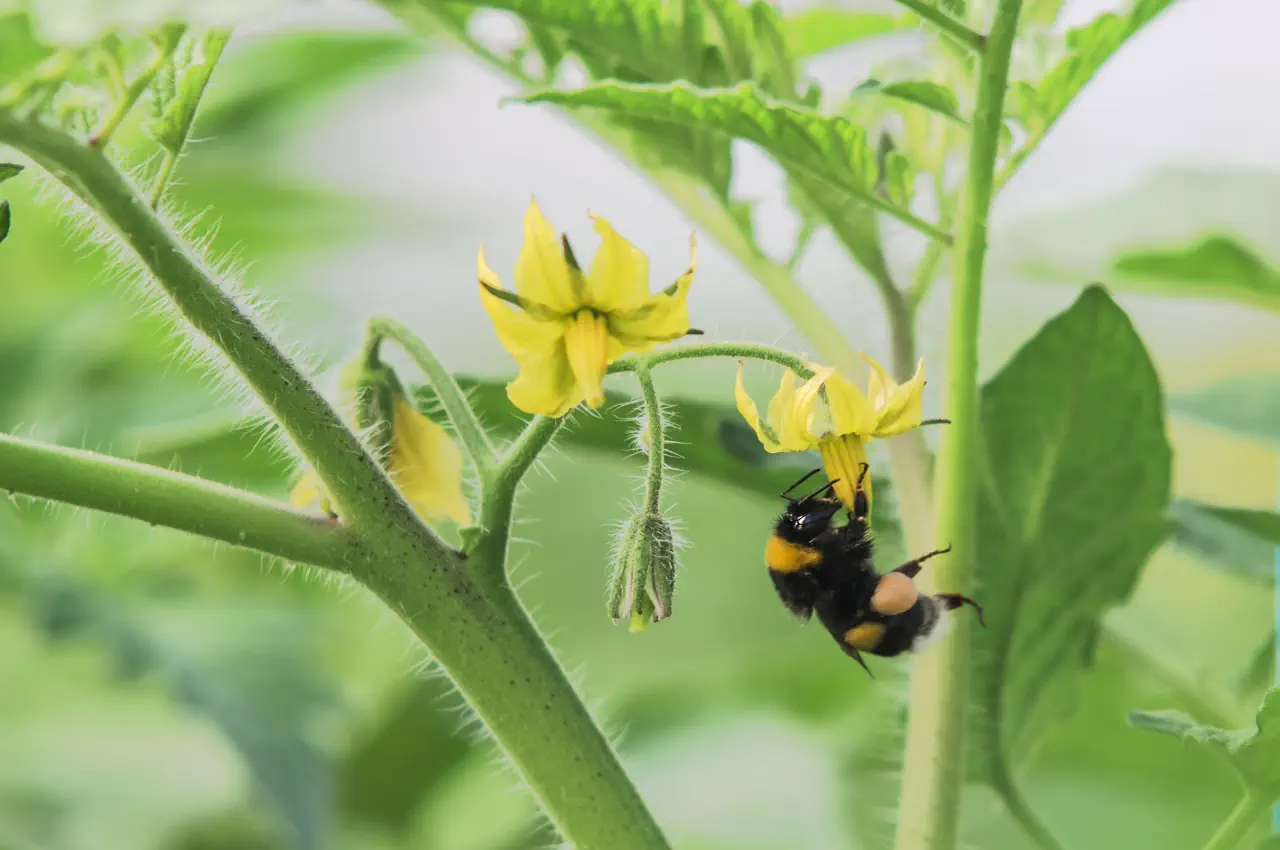Pak Choi is grown for its tasty leaves which are superb when added to stir fries and salads.
The taste is similar to that of mild cabbage and spinach and is a popular addition to many oriental dishes.

If you were growing tomatoes in the open garden or allotment then you wouldn’t have to concern yourself too much with pollination. Tomatoes are self-pollinating, which means the flowers contain both male and female productive parts. For a plant to be self-pollinating there must be a way for the pollen to be transferred to the stigma of the same flower or group of flowers of the same plant. Outdoors, this can occur with the assistance of wind, which blows and shakes the plant, helping to release the pollen grains.
Better still, is the intervention of insects, who will carry out the pollination process routinely and effectively. Bees especially, make excellent pollinators, and will do a more thorough and comprehensive job at ensuring each flower is duly pollinated. They do this incidentally, as they visit each flower in turn in search of pollen, which they eat and take back to the hive. During this process, pollen grains are inevitably released and dispersed. Evolution has shown that flowers of all types and descriptions have developed ways, in which to attract bees and other insects, therefore ensuring the plant’s future and continuity of the species.
Pollinating by hand – method 1
When growing tomatoes in a greenhouse you are excluding the possibility of insect pollination and natural wind pollination. You can of course open the greenhouse windows and doors and hope that enough of a breeze will flow through or a few insects will fly in and do the job but that’s a bit optimistic. When growing tomatoes within a confined space, the only certain way to ensure pollination is to do it by hand. There are several ways this can be done and it’s not as difficult as it might sound.
The first option is to gently shake the plants to disperse the pollen grains. To be effective, timing is very important. This method should be carried out in the morning up to around midday, with midday being the optimum time because the flowers should be fully open then. Also, choose a day that is going to be warm and sunny with low humidity. If the weather conditions are not favourable and time is getting on, in terms of flower development, then try shaking the plants anyway. You may have to this several times over a period of days.
Pollinating by hand – method 2
A much more effective way than shaking the plant and hoping for the best is to use an electric toothbrush. A battery-operated toothbrush, on its lowest setting, will vibrate at just the right speed and frequency to help disperse the pollen evenly. Simply hold the back of the toothbrush up to the plant’s stem, close to the flowering trusses, and switch on. You could even hold the toothbrush right behind and against each individual flower, while gently blowing over the flower to ensure the pollen reaches the flower’s stigma.
Pollinating by hand – method 3
Some gardeners prefer to be absolutely sure that the flowers have been pollinated by collecting the pollen from the anthers of several flowers and placing it in a container. They would then using a cotton swab to transfer the pollen to the stigma of each flower. A typical cotton bud, which can be easily purchased from any pharmacy or supermarket, is ideal for this method. An alternative to a swab is a fine horsehair paintbrush. The process should be repeated within 2-3 days.
Final thoughts
In almost all cases, when the flowers begin to fold their petals and die, you can be assured that the pollination process has been successful. Within a few days tiny green tomatoes will appear at the base of where the flower once was. Commercially, and for those who might be planning on growing tomatoes on a larger scale, there is a range of electric vibrator kits and air pumps, each specially designed for the job.
Do you bother pollinating tomatoes, or just leave them to it? Leave a comment below and let everyone know....
All blog content on this page is copyright of SimplySeed and is not to be reproduced without prior written permission. ©
pollenate with a paint brush watercolour type
In the greenhouse, for years I have used a bird feather found in the garden. Works every time.